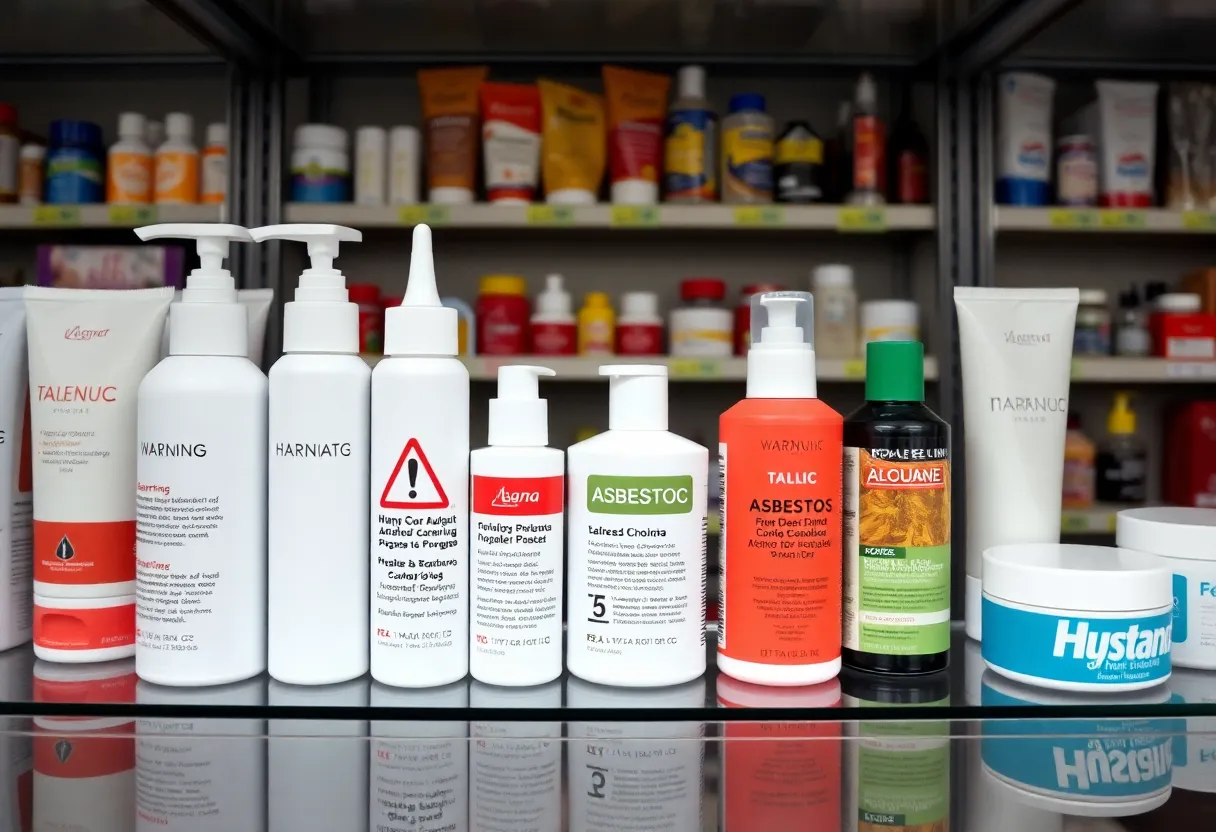News Summary
New FDA Rule Aims to Combat Asbestos in Talc-Containing Cosmetics
In a significant move to bolster consumer safety, the U.S. Food and Drug Administration (FDA) has put forth a proposed rule aimed at standardizing testing methods for detecting asbestos in talc-containing cosmetics. This initiative is a direct result of the Modernization of Cosmetics Regulation Act of 2022 (MoCRA), designed to enhance product safety and mitigate consumer exposure to the known carcinogen, asbestos.
A Mandatory Testing Approach
The ambitious proposed rule, entitled “Testing Methods for Detecting and Identifying Asbestos in Talc-Containing Cosmetic Products”, mandates that manufacturers utilize both Polarized Light Microscopy (PLM) and Transmission Electron Microscopy/Energy Dispersive Spectroscopy/Selected Area Electron Diffraction (TEM/EDS/SAED) for testing purposes. These scientific protocols were previously accredited by the Interagency Working Group on Asbestos in Consumer Products (IWGACP) and have garnered support from recent peer-reviewed research published in 2022.
The Ongoing Risk of Contamination
Talc has held a longstanding presence in the cosmetics industry but carries an inherent risk of asbestos contamination during the mining process. The specter of cross-contamination continues to present a significant health threat, with potential links to severe diseases, including various forms of cancer. Despite testing results from 2021 showing no asbestos in over 150 cosmetic samples, apprehensions regarding talc’s safety remain high.
Legislative Action and Industry Accountability
With lawmakers passing a 2023 statute compelling the FDA to implement new industry standards for asbestos testing, the urgency for improved regulations is palpable. The proposed regulations stipulate that manufacturers must test a representative sample from each batch or lot of their talc-containing products. Alternatively, companies may choose to utilize a certificate of analysis from certified talc suppliers, which must be validated on an annual basis to ensure compliance.
Record-Keeping and Transparency Requirements
The FDA is adopting stringent record-keeping protocols, necessitating that manufacturers maintain detailed documentation on testing and certificates from suppliers. These records must be accessible to FDA officials within one business day and should be stored for a minimum of three years. Furthermore, any records must be in English or accompanied by a certified translation. Non-compliance will be seen as a violation under the Federal Food, Drug, and Cosmetic Act (FDCA) and could result in products being deemed adulterated.
Impact on Major Companies
The proposed regulations have arisen in the midst of growing legal challenges facing major cosmetic companies, including well-known brands like Johnson & Johnson. Lawsuits claiming that their talc-based products have led to various forms of cancer, particularly ovarian cancer, have intensified pressure on these companies to reassess their safety protocols. J&J has even suggested an $8 billion settlement to address thousands of lawsuits, though they continue to face legal hurdles stemming from bankruptcy filings.
Intent and Future Prospects
The FDA is working to counter health concerns surrounding talc and enhance consumer confidence in cosmetic products. The proposed rule will come into effect 30 days following the final rule’s publication in the Federal Register, with a public comment period that remains open until March 27, 2025. This initiative represents a decisive response to ongoing public health apprehensions, highlighting the critical need for standard testing practices to ensure safety across the cosmetics industry.
A Call for Stakeholder Engagement
The FDA is actively inviting comments from stakeholders to help refine the proposed rule, ensuring that future policies are robust and effective at safeguarding public health. The emphasis on thorough and standardized testing methods marks a pivotal moment in the fight against the dangers of asbestos lurking in everyday products.
Deeper Dive: News & Info About This Topic
HERE Resources
Asbestos Discovery Causes Budget Surge in Avery Business Park Project
Bound Brook Memorial Library Set to Close Due to Asbestos Issues
Veterans Advised to Seek Compensation for Asbestos-Related Illnesses
New FDA Proposal Targets Asbestos in Talc-Containing Cosmetics
Asbestos: The Silent Killer Still Lurking in Workplaces
FDA Proposes Landmark Rule to Tackle Asbestos in Talc-Containing Cosmetics
Veterans Stand to Gain from Asbestos Trusts and VA Benefits
Albuquerque’s Gateway Center: A Toxic Discovery Unfolds
FDA’s New Proposal Seeks to Protect Consumers from Asbestos in Talc Cosmetics
Wildfires Ignite Air Quality Concerns in Los Angeles: A Hidden Threat from Asbestos and Toxic Particles



















